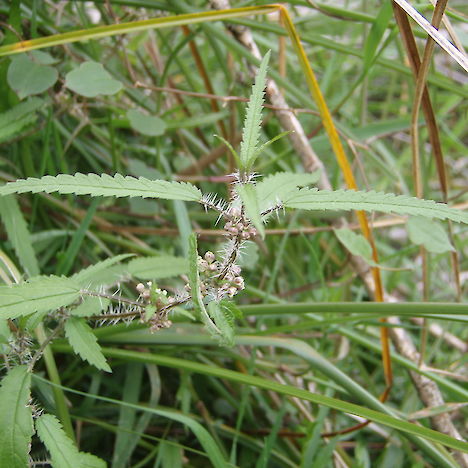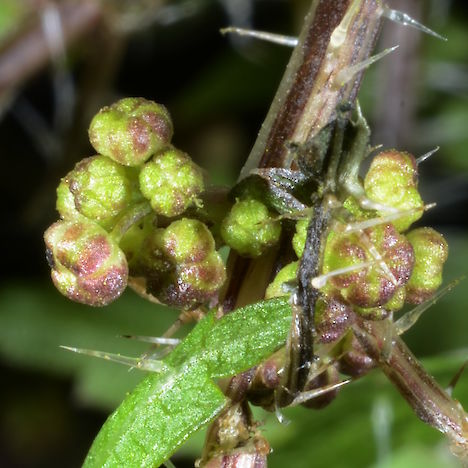Threat category:
At Risk: Declining?Regions:
Waikato, Bay of Plenty, Gisborne, Hawkes Bay, Manawatu-Wanganui, Taranaki, Wellington, Nelson-Tasman, Marlborough, Westcoast, Canterbury, Otago, SouthlandDistribution:
North Island and South Island
Key Features
- A narrow-leaved, sparingly branched, erect or scrambling herb with stems to 2 m tall. Stems and leaves are covered with stinging hairs that inflict a painful sting. Leaves are long (3-8 cm) and narrower (up to 1 cm wide) than other nettle species, and are sharply toothed. Flowers are inconspicuous and are borne in short spikes in leaf axils.
Distribution and Habitat
- North and South Islands in fertile lowland swamps and swampy shrubland and forest, up to 580 m in the North Island.
Threats
- Habitat modification and loss.
- Weed encroachment.
- Goat and stock browse.
- Inappropriate weed spraying.
Management Opportunities
- Survey for new locations.
- Mark known sites.
- Protection of habitat.
- Exclude browsing animals.
- Weed control.
- Reintroduction to appropriate wetland sites within plantation forests.
Monitoring Options
- Check existing populations annually.
- Report new locations to DOC, NZPCN.
Further Information and Support
- New Zealand Plant Conservation Network (NZPCN). http://www.nzpcn.org.nz
- Weed and pest management - Department of Conservation, Regional Councils
- References
- Dopson, S.R.; de Lange, P.J.; Ogle, C.C.; Rance, B.D.; Courtney, S. & Molloy, J. (1999). The conservation requirements of New Zealand’s nationally threatened vascular plants. Threatened Species Occasional Publication 13. Department of Conservation, Wellington.





